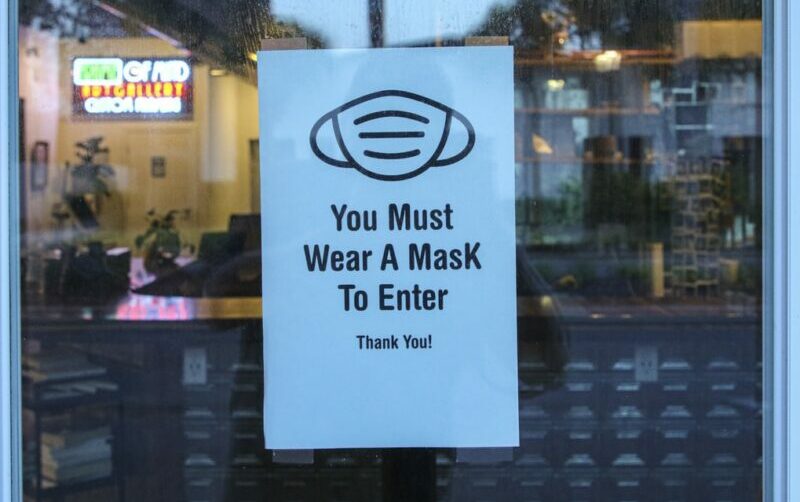It's time to change the Covid narrative from getting to zero to harm minimisation
September 2, 2021
Now is the time to adopt a new narrative for living with COVID-19 by replacing getting to zero with minimising the harm.
Remember the 1980s when Australia led the world by taking a partnership, harm minimisation approach towards containing and living with the HIV virus? No zero tolerance, no stigmatizing affected groups, no marginalizing individuals engaging in high risk and socially disapproved behaviours and no top-down threats or finger wagging. In addition to Australia being one of the first nations to contain HIV, the strategy of harm minimisation has facilitated a range of other positive social changes. We have become a society that celebrates gender and sexual diversity, supports safe injecting facilities, funds needle syringe programs, has de-criminalized sex work and integrated sex education into school curriculums. While harm minimisation is no magic bullet and many of its strategies remain controversial and politically contentious, it continues to work. It is here to stay. So, why is this approach conspicuously absent in moving forward to living with COVID-19?
Australias getting to zero approach to COVID-19 has likely been the right strategy up until now. However, a year and a half into the pandemic, it is time we change the narrative to one of harm minimisation. Most of us accept that that sooner or later we are going to have to learn to live with COVID-19, and there is a lot of uncertainty about what this means. We do know that getting most of us vaccinated is an important first step however, beyond this, what then? Now is the time to begin a discussion that goes beyond hitting a vaccination target. People are tired of lockdowns, kids are despondent, parents are frazzled, young people are losing their opportunities to make their lives through work and education, sport, parties and friends, livelihoods are being lost and we are becoming increasingly socially divided. The narratives of most of our politicians, backed by many public health experts, that we must continue to obey the rules and stay the course are losing credibility. The increasing tendency to deflect blame on a few individuals who are doing the wrong thing will only undermine the social contract that we are all in this together.
The approach to the lockdown protests held on Saturday August 21 is a case in point. In Melbourne, a reported 4000 people came into the CBD. I am led to understand that only a small number made up the anti-vaxxer, conspiracy folk. Many others were people from the outer suburbs who are losing their jobs and feel acutely the stress of financial insecurity. They are the folk for whom doing the right thing is beginning to wear thin. Where life is becoming increasingly difficult and where rolling lockdowns are having real personal and social consequences. Even I, a retired public health academic and one of those rule-abiding citizens, fully vaccinated, fully masked and fully socially distanced, am having growing sympathy for non-violent acts of resistance.
We now need a narrative that helps us to imagine what living with COVID-19 will be like. A harm minimisation approach can help us to begin to think and behave differently now. This is an urgent task.So, what might this entail? First, ditch the getting to zero story. It is past its use-by date. Replace it with living with Covid in ways which promote our individual freedoms and strengthen our social contract of inclusivity, care and support. Second, build a living with COVID-19 narrative on an evidence-based approach to harm minimisation. This includes evidence drawn from the many disciplines making up public health from the benchtop sciences, epidemiology and the social sciences and community-based evidence. For example, we know that the medical/health evidence suggests that transmission out of doors is low risk and the social science evidence tells us that being outside, breathing fresh air, socialising at an appropriate distance, playing together, reading on the grass, and generally being in nature promotes social and individual well-being. Being out of doors is good for individual and population health. So, instead of the current zero-tolerance tactic, we could adopt a harm minimisation approach now and open the kids’ playgrounds, remove the welded covers from the community basketball hoops, open the skate parks and accept that a few cases of COVID-19 transmission _might_occur.
A harm minimisation approach would also support the natural right to protest and thus reframe the lock down freedom marches. Permits to conduct a protest march could be subject to approval with conditions that apply to all outdoor activities including masking, socially distancing and are non-violent. This then allows the police to adopt a community policing approach. There are many more strategies that a harm minimisation approach would support now and form the basis for the transition to living with Covid in our near future. Indeed, minimizing the harm while living with Covid could be the foundation for the promised road map to opening and joining the world.
Australias success with a harm minimisation approach to other different but equally challenging viruses (HIV and Hepatitis C as for example) should give us great confidence that we can do it again with COVID-19. But I fear that we are now a fair way behind and are rapidly losing the good will and trust of law-abiding individuals and communities. So, lets make the getting to zero story yesterdays news. Instead, lets adopt a sound, evidence-based harm minimisation approach. Harm minimisation includes getting all eligible people fully vaccinated. But lets not fool ourselves that vaccination is the magic fix. Australia has been and continues to be a world leader in successfully adopting harm minimisation approaches and policies to a range of wicked health challenges. Applying harm minimisation to going forward as a society to living with COVID-19, is something for which we have both experience and evidence. Lets do it and do it now.

